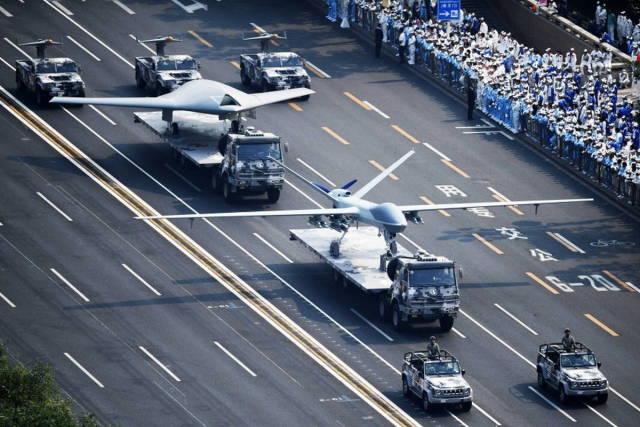We continue the series of articles about the PLA UAVs. This article will present unmanned systems that are in service with the Air Force of the People's Liberation Army of China.
New reconnaissance and strike UAV PLA " Pterodactyl-10»
According to Chinese sources, since November 1, 2020, the PLA Air Force has adopted high-altitude reconnaissance and strike unmanned aerial vehicles "Pterodactyl-10" (Wingloong-10), which appeared at exhibitions in Zhuhai under the designation "Cloud Shadow". This UAV was developed by the designers of the Chengdu Aviation Industry Corporation (Sichuan province, Chengdu city).
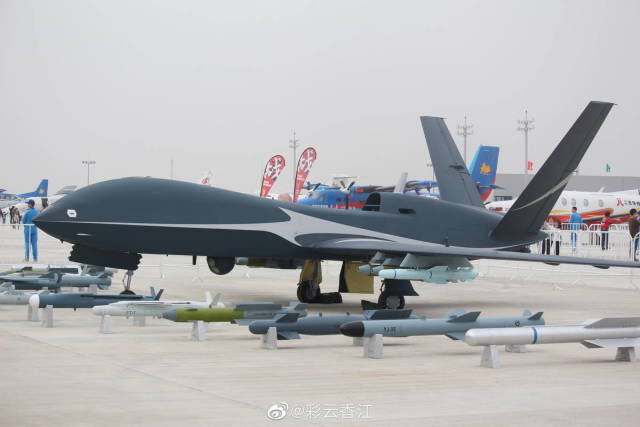
Reconnaissance and strike UAV " Pterodactyl-10 "(Wingloong-10)
It is possible to specify the following TTX:
- length: 9.05 m;
- wingspan 17.8 m;
- maximum take-off weight: 3000 kg;
- maximum fuel weight: 1000 kg;
- maximum payload weight: 400 kg;
- maximum flight duration: 6 hours;
- maximum speed: 620 (670) km / h;
- maximum range: 3,600 (4,000) km;
- combat patrol radius of 1000 km;
- practical ceiling: 14000 (14500) m;
- maximum range of the radio communication system with the ground control station: 290 km.
The PLA UAV under consideration is made using two types of carbon fiber M70J and T1000, which cause a small fuselage weight and its high strength characteristics. In addition to composite materials, Chinese designers used a special paint coating that reduces optical and radar visibility. It is necessary to pay attention that the air intake of the S-shaped profile is located on the upper plane of the fuselage, which eliminates the radar illumination of the engine fan blades. Also, to reduce radar visibility, the tail is made in the shape of the letter "V". In order to increase the range and duration of the flight, the Pterodactl-10 UAV can be equipped with two additional fuel tanks.
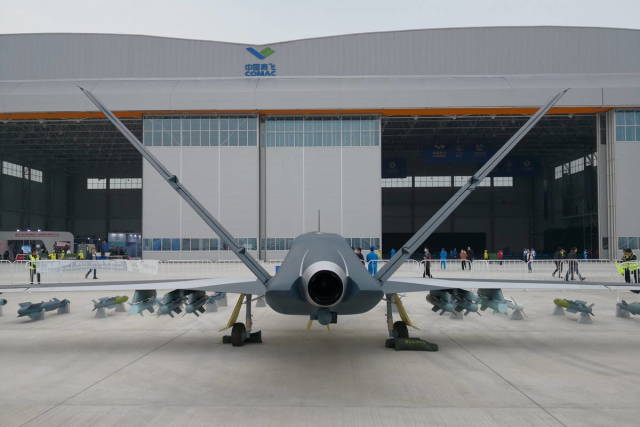
V - shaped tail and nozzle of the UAV "Pterodactl-10»
The specified flight range is provided by the use of two turbofan engines (turbofan engine WP-11C, 10KN power) of the WP-11C model (thrust of about 1000 kgf / cm.kv), which are characterized by high fuel efficiency when flying at low altitudes. Chinese sources indicate that these engines provide the ability to fly at altitudes up to 17,800 m, i.e. the UAV" Pterodactyl-10 " (Wingloong-10) can fly out of the affected area of a large number of air defense systems. It should be noted that the WP-11C engine (the designation of the civil version – ZF-850) has a small resource-the repair interval is 150 hours.
Specialists from 31 research departments of 3 Research institutes of the China Aerospace Science and Industry Corporation are working on a whole series of WP-11 engines (WP-11D, WP-11F) in cooperation with Beijing Aerospace University and the Gorenje Institute for the Design of Physical Combustion Processes of the Academy of Sciences of the People's Republic of China. To improve the design of this engine, Chinese specialists need the assistance of employees of KNAAPO (Komsomolsk-on-Amur Aviation Plant named after Yu. A. Gagarin).
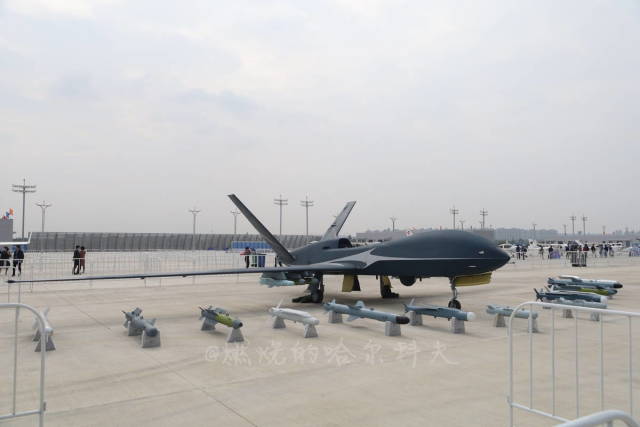
Aviation means of destruction of UAV " Pterodactyl-10"
Under the wings of the Pterodactyl-10 UAV (Wingloong-10), up to 6 weapons can be placed on the four external suspension points due to the use of special double brackets. The range of aircraft weapons includes compact anti-ship missiles "Yingji-9E"; anti-tank guided missiles AR-1, AR-2, as well as "Blue Arrow-21" ; aviation feathered corrected (laser beam) high-explosive fragmentation bombs GB100 and GB50. The launch range of these types of weapons varies from 60 to 88 km, depending on the model.
In addition to performing strike tasks, the PLA Pterodactyl-10 UAV (Wingloong-10) can conduct optoelectronic and radio-technical (radar, within a radius of 200 km) reconnaissance, and also provides guidance for batteries and MLRS divisions. It is reliably known that to monitor the situation on the flight course, the UAV is equipped with a high-resolution multi-mode television camera (built into the front part of the fuselage), as well as an optoelectronic reconnaissance and guidance system, which is located in a rotating hemispherical body. The maximum flight altitude for conducting optical reconnaissance is 10,000 m.
UAV" Pterodactyl-10 " (Wingloong-10) allows you to intercept data on enemy radio channels within a radius of up to 400 km.
Evaluation of the new Chinese GJ-11 stealth UAV of the PLA Air Force
The new low-visibility reconnaissance and strike unmanned aerial vehicle under the designation GJ-11 (English Attack-11) was first presented to the general public at a parade in Beijing on October 1, 2019.
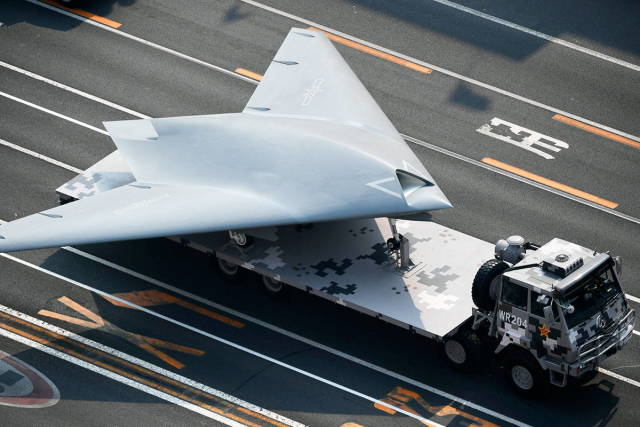
Unobtrusive reconnaissance and strike UAV GJ-11 on parade
This device was developed by the designers of the Hundus Aircraft Building Association in the interests of the operational and tactical aviation units of the PLA Air Force, which are or will be equipped with low-visibility J-20 fighters. Chinese experts point out that the main radar of this aircraft has a very large power-130 kW, which allows the units of the radio engineering troops of the probable enemy to detect this aircraft in advance and take measures to intercept it. In addition, the high level of radiation has a detrimental effect on the health of pilots, for whom new flight suits with improved protection against electromagnetic radiation are being developed.
It is reliably known that Chinese designers began research and development work on the GJ-11 UAV in 2006, based on data on the American RQ-180. In 2009, production of full-size UAV design elements began. By 2012, the program of bench tests was completed, and during 2013, a full cycle of test flights was completed. Small-scale assembly started in 2017. Production of the GJ-11 UAV is established at the Shenyang Aircraft Manufacturing Enterprise (Shenyang city, Liaoning Province).
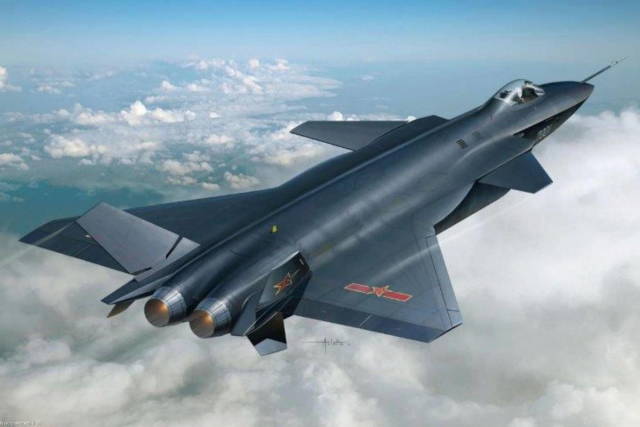
Low-profile J-20 fighter jet of the PLA Air Force
According to Chinese sources, the length of the GJ-11 UAV is 10 m, the wingspan is 14 m. Probably, the maximum take-off weight (with fuel and weapons) of the device is about 10 tons.
The body of the drone is made of composite materials, which are characterized by a high ability to absorb radiation from the radar of a likely enemy. The shape of the UAV has a pronounced triangular shape with a sweep angle of 55 degrees. For comparison, the sweep of the body of the B-2 Spirit strategic bomber of the US Air Force is 33 degrees. The effective scattering area of the GJ-11 UAV does not exceed 0.04 sq. m (RCS=0.04 m).
To reduce the radar visibility of the GJ-11 UAV, Chinese designers placed an S-type air intake in the upper plane of the hull and thereby eliminated the possibility of reflecting the radar signal of a likely enemy from the fan blades of the jet engine. In the modification for the PLA Navy carrier-based aircraft, this device will have a folding wing (25% of the length), which will allow you to place the required number of drones in the sub-deck hangar.
As for the power plant, it is known that the GJ-11 is equipped with a Russian RD-93MK engine without an afterburner, which is due to the requirements for reducing the thermal visibility of the drone. Exhaust gases exit through a rectangular hole in the UAV body, which is made with the use of heat-resistant materials and sprays. The lower plane of the exhaust port has a larger area for more efficient heat removal and reducing the visibility of the UAV in the infrared spectrum. The only drawback of such a technological solution is that the engine thrust is reduced due to the lack of a full-fledged circular nozzle. This is the first example of such an engineering solution by Chinese designers, and only experimental military operation will show its practicality and expediency.
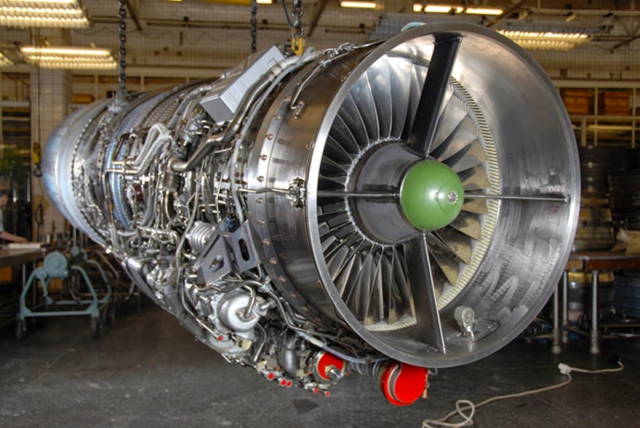
Russian RD-93MK turbojet engine
There is a high probability that this element of the body is able to deflect the thrust vector of the engine in the vertical plane to improve the maneuverability of the UAV. Probably, the fuel reserve in the internal tanks is enough to make a direct flight to a range of up to 3000 km at subsonic speed, or to carry out covert combat patrols within a radius of 1200 (according to other sources, 1500) km. The PLA UAV in question can perform combat missions in a given area for 2 hours. The maximum speed is MACH 0.9.
Such parameters are due to the lack of an afterburner, since the Russian RD-93MK turbojet engine is characterized by a fairly large fuel consumption in the afterburner mode. Some Chinese experts believe that the GJ-11 UAV can be equipped with one of the modifications of the WS-13 turbojet engine of national production. However, these power plants are unstable at high-altitude airfields. In addition, the resource of Chinese-made engines is also less, and the replacement and repair of the engine can only be carried out in a specialized workshop.
With regard to aircraft weapons that can be placed in two internal missile and bomb compartments, it is known that these can be 2 bombs weighing 500 kg each or 8 small-caliber bombs weighing 100 kg each. It seems possible to say that heavy bombs are LS-series ammunition, and small-caliber bombs are FT-series bombs. Currently, Chinese gunsmiths are working on guided, adjustable gliding bombs of the third generation, which have a coefficient of probable deviation of less than 1 m and allow them to recognize targets of 0.2 m in the daytime and at night.
According to the calculations of Chinese experts, when performing the task of suppressing the air defense system of a likely enemy, a group of 50 GJ-11 UAVs can destroy up to 100 pieces of equipment – radars, launchers, control vehicles, etc. The breakthrough of the air defense line of a likely enemy will be carried out before the strike, which can be carried out by H-6 bombers, low-visibility J-20 fighters or J-16 fighter-bombers of the PLA Air Force.
To be continued…
Based on the materials of military-technical publications of China
